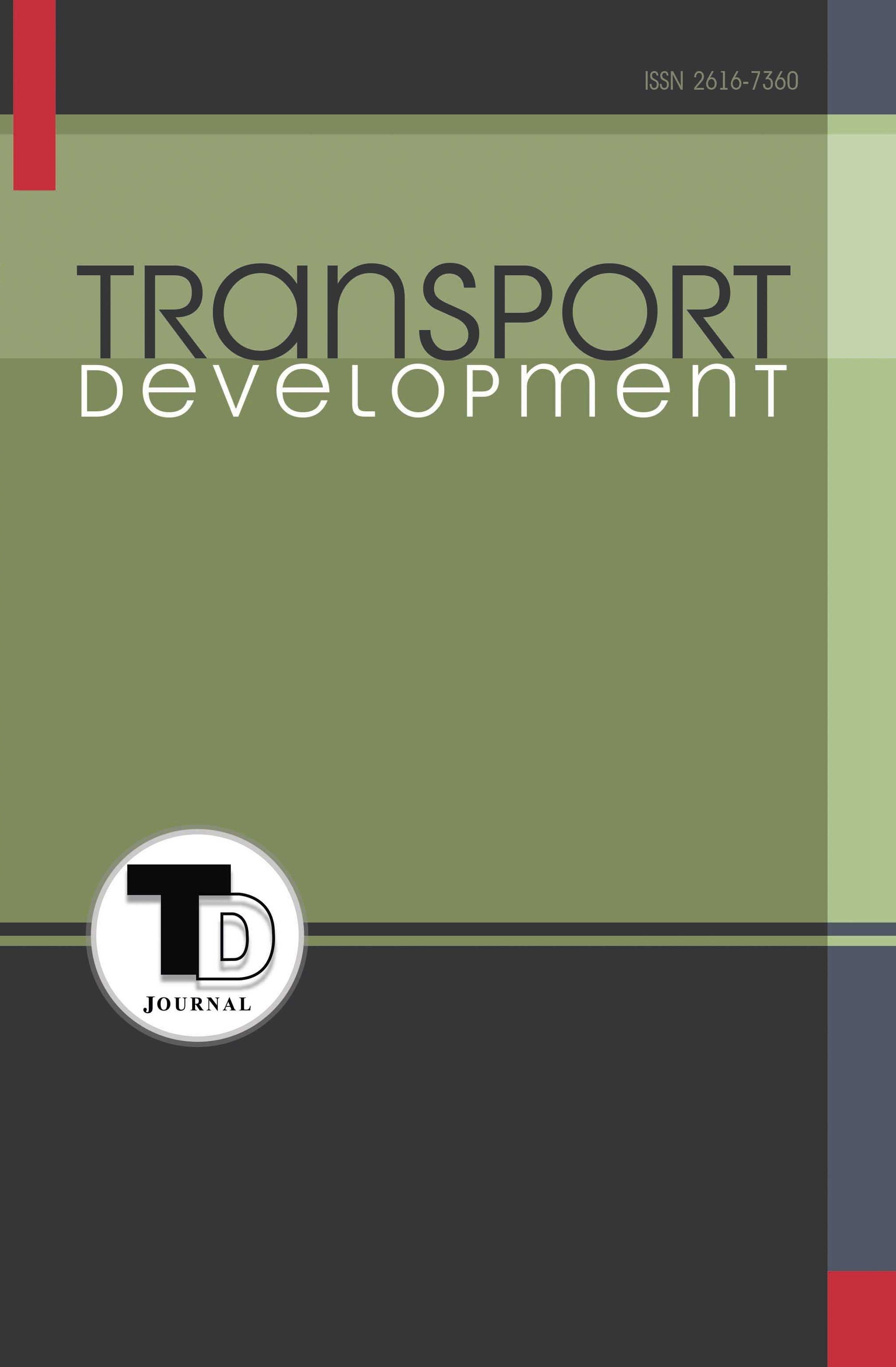JUSTIFICATION OF THE NEED TO INTRODUCE DIAGONAL PEDESTRIAN CROSSINGS AT THE INTERSECTIONS OF KHARKIV
Abstract
Introduction. Improving urban mobility is important for the quality of life and the environment of cities. Developing public transport, bicycle paths, and pedestrian areas reduces congestion and greenhouse gas emissions. The organization of pedestrian traffic increases the safety and comfort of movement. Modern solutions include diagonal pedestrian crossings (DPC), which allow people to cross intersections in either direction. They reduce traffic delays and the risk of accidents, making them a popular choice in modern cities. Purpose. This article focuses on the rationale and preliminary assessment of the feasibility of implementing DPC. The absence of such solutions inconveniences pedestrians and increases the risk of accidents at intersections with heavy traffic. The study is based on the analysis of successful international experiences due to local infrastructure limitations. Results. Studies of DPC demonstrate their effectiveness in improving pedestrian safety and reducing conflicts with vehicles. There are examples of successful implementation in many cities around the world. In Ukraine, such crossings have not appeared in all cities, although international experience proves the importance of applying technological solutions to optimize traffic flows and pedestrian safety. The study analyses the possibility of introducing a DPC, using the example of the intersection of Evropeiska – Patriarch Mstyslav – Ostap Vyshnia streets in Poltava. The criteria for its implementation are defined, it is proposed to consider two schemes of crossing the carriageway by pedestrians, traffic modeling is carried out, and the effectiveness of changes in terms of delays, safety, and environmental impact is assessed. Conclusions. The modeling and analysis results of the functioning of the studied intersection indicate the effectiveness of DPC implementation. An average reduction of vehicle and pedestrian delays, fuel consumption, and congestion length by about 10% was found. This confirms the rationality of implementing DPC to optimize intersection capacity and reduce transport costs. Given the high level of traffic in Kharkiv, DPC is a promising solution for improving pedestrian safety and traffic management.
Downloads
References
2. Pedestrian planning and design guide. NZ Transport Agency, October 2009 ISBN 978-0-478-35228-3 (online). URL: https://www.nzta.govt.nz/assets/resources/pedestrian-planning guide/docs/pedestrian-planning-guidesuperseded.pdf (дата звернення 21.01.2025)
3. Francis, E. (2023). Impacts of Diagonal Crosswalk Misuse. Civil Engineering Undergraduate Honors Theses Retrieved from https://scholarworks.uark.edu/cveguht/81
4. В Україні з'являться діагональні пішохідні переходи. УНІАН: веб-сайт. URL: https://www.unian.ua/economics/transport/10514073-v-ukrajini-zyavlyatsya-diagonalni-pishohidni-perehodi.html (дата звернення 24.01.2025)
5. В Одесі зʼявився перший діагональний пішохідний перехід: що це та як працює? Hotline Finance: веб-сайт. URL: https://hotline.finance/ua/articles/v-odesi-z-yavivsya-pershiy-diagonalniy-pishohidniy-perehidshcho-ce-ta-yak-pracyuye (дата звернення 25.01.2025)
6. Grigonis, V., Kondratovič, V., Palevičius, V., Juozevičiūtė, D., Karpavičius, T., & Smirnovs, J. (2023). Performance Analysis of One-Level Signalized Urban Intersections with Exclusive Pedestrian Phases and Diagonal Crossings. The Baltic Journal of Road and Bridge Engineering, 18(4), 65-89. https://doi.org/10.7250/bjrbe.2023-18.619
7. Juozevičiūtė, D., & Grigonis, V. (2022). Evaluation of Exclusive Pedestrian Phase Safety Performance at One-Level Signalized Intersections in Vilnius. Sustainability, 14(13), 7894. https://doi.org/10.3390/su14137894
8. Cai, J., Wang, M., & Wu, Y. (2024). Research on Pedestrian Crossing Decision Models and Predictions Based on Machine Learning. Sensors, 24(1), 258. https://doi.org/10.3390/s24010258
9. Michelle Leung, Sam Maggs, Svyatoslav Glazyrin (2012). Intersection Optimization Analysis: Cambie & W. Broadway, Vancouver. Analytics Now 2012 Edition. ANALYTICS NOW: веб-сайт. URL: https://journals.lib.sfu.ca/index.php/analytics-now/article/view/31/15
10. Guidelines for Pedestrian Crossing Facilities at Traffic Control Signals (2023). Mainroad Western Australia: веб-сайт. URL: https://www.mainroads.wa.gov.au/globalassets/technical-commercial/ technical-library/road-and-traffic-engineering/traffic-management/trafficsignals/ guidelines-for-pedestrian-crossing-facilities-at-traffic-signals-v2.pdf
11. Doyoung Jung, Dongmin LEE, Jinwoo Jun, Daecheol HAN (2017). Analysis of the Effects of Scrambled Crosswalk Installation Depending on the Types of Intersections Using VISSIM. International Journal of Highway Engineering Vol.19 No.3 Pp.71-81. DOI: https://doi.org/10.7855/IJHE.2017.19.3.071
12. Bechtel, A. K, MacLeod, K. E, & Ragland, D. R. (2003). Oakland Chinatown Pedestrian Scramble: An Evaluation. UC Berkeley: Safe Transportation Research & Education Center. Retrieved from https://escholarship.org/uc/item/3fh5q4dk
13. T. Bozovic, E. Hinckson, M. Smith (2024). Pedestrian crossings: Design recommendations do not reflect users’ experiences in a car-dominated environment in Auckland, New Zealand. Transportation Research Part A: Policy and Practice Volume 187, September 2024, 104169 https://doi.org/10.1016/j.tra.2024.104169
14. Нагребельна Л.П., Беленчук О.В., Кононенко А.О. (2018). Підняті пішохідні переходи, як засіб забезпечення безпеки пішоходів. Авто- мобільні дороги. Безпека руху. Автошляховик України, № 2. С. 47-50. URL: https://surl.li/jwpeus
15. PTV VISSIM: first steps tutorial. Germany. Ptv planning transport. Verkehr ag. 2021. P. 37
16. Електронні петиції. Полтавська міська рада: веб-сайт. URL: https://petition.rada-poltava.gov.ua/petition/view?id=196 (дата звернення 02.12.2024).





